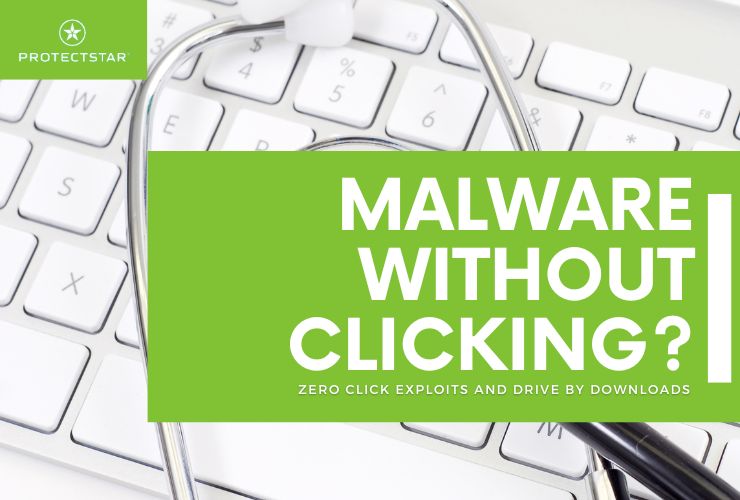Zero-Click Exploits and Drive-By Downloads

While traditional malware relies on tricking you into clicking something malicious, there are some more sophisticated threats out there. Let's take a look at the world of zero-click exploits and drive-by downloads to understand how they work and how to defend against them.
Zero-Click Exploits
Imagine a thief who can unlock your door without ever needing a key. That's the idea behind a zero-click exploit. These exploits target vulnerabilities, or holes, in software like your web browser, operating system, or even specific applications. They then leverage these vulnerabilities to install malware without any user interaction whatsoever.
Here's a breakdown of how they might work:
- Targeting Unpatched Software: Many zero-click exploits take advantage of vulnerabilities that haven't been patched yet. These are called "zero-day vulnerabilities" because software developers have zero days to fix them before they get exploited.
- Weaponizing Multimedia Files: Some zero-click exploits can be embedded in seemingly harmless multimedia files like images or videos. When you open the file, the exploit code hidden within can take advantage of a vulnerability in your software to install malware.
- Attacking Through Messaging Apps: In recent years, attackers have targeted vulnerabilities in messaging apps to deliver zero-click exploits. Simply receiving a specially crafted message can be enough to trigger the exploit and compromise your device.
The challenge with zero-click exploits is that they are often undetectable. Since they don't require any user interaction, traditional security software that relies on identifying suspicious behavior may miss them.
Drive-By Downloads: A Blast from the Past (Mostly)
Drive-by downloads were a more common threat in the early days of the internet. These malicious downloads would happen automatically when you visited a compromised website. The website would contain hidden code that exploited vulnerabilities in your browser to download malware onto your device in the background, all without you ever clicking a link.
Thankfully, modern browsers are much better at detecting and blocking these drive-by download attempts. They use various techniques like sandboxing (running suspicious code in a separate, isolated environment) and script blocking to prevent malicious code from executing on your computer.
However, it's important to note that drive-by downloads haven't completely disappeared. They may still be a threat on older, unpatched systems or when visiting very malicious websites.
Staying Safe from Silent Threats
While zero-click exploits and drive-by downloads pose a serious threat, there are steps you can take to protect yourself:
- Keep Software Updated: This is the single most important step. Regularly update your operating system, web browser, and all other software to ensure you have the latest security patches that address known vulnerabilities.
- Be Wary of Unfamiliar Websites: Avoid visiting websites from untrusted sources, especially those that seem suspicious or offer free downloads that sound too good to be true.
- Use a Reputable Security Suite: A good security suite can help to detect and block zero-click exploits and drive-by downloads, even if they slip past your browser's defenses.
- Stay Informed: Keep yourself updated on the latest cybersecurity threats and how to protect yourself.
Have you ever been hacked this way? Let us know!